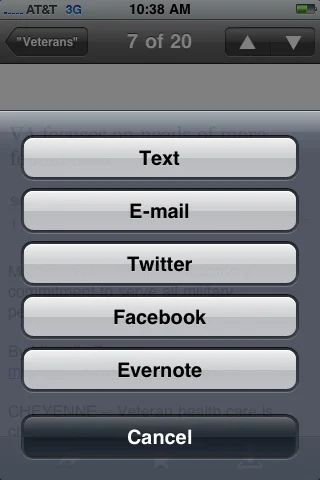Transliteracy - What is it and what does it mean for the School Library

AP Mobile App for iPhone by Unquiet Librarian
The concept of literacy has evolved from a fairly universal one: the ability to read and understand printed text, to a rather complex one: the ability to absorb and understand many types of information in an ever-growing list of formats. The range of literacies includes, but is not limited to: digital literacy, information literacy, visual literacy, media literacy, health literacy, financial literacy, and news literacy.
What binds all of these literacies together?
What are the competencies required to be literate across these and more subsets?
What are the implications for libraries / education?
We need to grow and maintain our own knowledge and understanding of the many literacies, how they are interrelated, and why they are important for students. We need to identify ways of effectively facilitating understanding in our students. Basic literacy, critical analysis skills and competence with ICT are key to developing all other literacies.
How do school libraries fit?
One of the major concerns about multiple literacies or transliteracy voiced here and overseas, is about the divide between those who do and those who don't have these skills.
The school and its library are a good place to address that divide, to give access to the tools and teach the competencies, especially for those students who come from a home that has limited access to a computer or to broadband Internet.
It is in fact critical, that all students learn multifaceted literacy competencies at school if they are to be effective adult participants in our democracy and our society generally.
The pace of change from an analogue to a digital environment is accelerating. The ability to navigate effectively through the future landscape of data and information to find and utilise valid information for any purpose is a basic skill that will underpin others.
School libraries therefore are well placed to provide access to and learning opportunities for students to become skilled users of text, data, and other information that will form the foundations of other learning.
Lane Wilkinson writes:
"Transliteracy comes into play as a pedagogical method, a way to break down the barrier between the student and the library. It encompasses established methods like transfer of learning and analogical reasoning in the library classroom. It’s using Wikipedia to find keywords for a search in CINAHL. It’s reading an academic journal article and then looking up the author’s personal blog for more contexts. It’s comparing hash tags to subject headings and Amazon reviews to abstracts."
“Linking up traditional notions of authority with the realities of how people obtain information today”
Recently the Unquiet Librarian wrote a thought provoking post about transliteracy and what it means for libraries.
She writes:
"I would like to further explore how libraries can be sites of literate communities. …Where people are engaging in many kinds of literate practices to consume and create content in thoughtful, meaningful, and new ways that meld traditional and new literacies.I also will continue to explore how participatory culture and librarianship dovetail with transliteracy."
By Lisa O